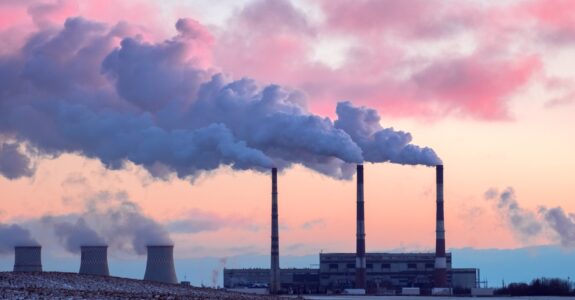
EPA Proposes Stringent Emission Limits for Large Municipal Waste Combustors (MWCs)
February 21, 2024
Introduction
In a significant move towards environmental protection and public health, the EPA is suggesting amendments to emission guidelines (EG) for existing sources within the large municipal waste combustors (MWCs) category and the performance standards for new stationary sources (referred to as new source performance standards, or NSPS) . This entails a revision of the standards for incinerators falling under the large MWC source category, specifically those that combust more than 250 tons per day (tpd) of municipal solid waste (MSW).
The proposed limits signal a commitment to reducing air pollution and improving overall air quality and represents the EPA exercising its authority under section 129 of the Clean Air Act (CAA). In this blog post, we will delve into the key aspects of the proposal and discuss potential implications for the waste management sector.
Proposed Emission Limits
The EPA’s proposal targets several pollutants including particulate matter (PM), sulfur dioxide (SO2), hydrogen chloride (HCl), nitrogen oxides (NOx), carbon monoxide (CO), lead (Pb), cadmium (Cd), mercury (Hg), dioxins/furans (PCDD/PCDF). Tables 1 and 2 provide a breakdown of the current emission limits and the proposed subcategory limits for EG and NSPS, respectively.
Current 2006 EG and Proposed Emission Limits
| Pollutant | Units of measure | 2006 NSPS (current) limits | Proposed subcategory NSPS limits | ||
|---|---|---|---|---|---|
| MB/WW | MB/RC | RDF/S | |||
| Cd | ug/ dscm @7 percent O2 | 10 | 1.1 | ||
| Pb | ug/dscm @7 percent O2 | 140 | 13 | ||
| PM | mg/ dscn1@7 percent O2 | 20 | 4.9 | ||
| Hg | ug/dscm @7 percent O2 | 50 | 6.1 | ||
| PCDD/PCDF | ng/dscm @7 percent O2 | 13 | 1.8 | ||
| HCI | ppmdv @7 percent O2 | 25 | 7.8 | ||
| SO2 | ppmdv @7 percent O2 | 30 | 14 | ||
| NOx a | ppmdv @7 percent O2 | 150 | 50 | ||
| CO | ppmdv @7 percent O2 | b 50-150 | 16 | 100 | |
a NOX limit based on 50 ppm (24 hour) permitted limit for units currently equipped with SCR control devices.
b Range in limits based on combustor type. MB/WW (100); RDF/S (150); Modular starved air or modular excess air (50).
MB/WW – mass burn waterwall
MB/RC – mass burn rotary waterwall
RDF/S – refuge derived fuel stoker
RDF/SS – refuge derived fuel spreader stoker
Current 2006 NSPS and Proposed Emission Limits
| Pollutant | Units of measure | 2006 EG (current) limits | Proposed subcategory EG limits | ||||
|---|---|---|---|---|---|---|---|
| MB/WW | MB/RC | RDF/S | RDF/SS | RDF/FBC | |||
| Cd | ug/dscm@7 percent O2 | 35 | 1.5 | ||||
| Pb | ug/dscm @7 percent O2 | 400 | 56 | ||||
| PM | mg/dscn1@7 percent O2 | 25 | 7.4 | ||||
| Hg | ug/dscm @7 percent O2 | 50 | 12 | ||||
| PCDD/PCDF | ng/dscm @7 percent O2 | b 30/35 | 7.2 | ||||
| HCl | ppmdv @7 percent O2 | 29 | 13 | ||||
| SO2 | ppmdv @7 percent O2 | 29 | 20 | ||||
| NOx a | ppmdv @7 percent O2 | c 180-250 | 110 | ||||
| CO | ppmdv @7 percent O2 | d 50-250 | e 100 | 110 | 110 | e 250 | 110 |
b 30 ng/dscm for fabric filter equipped MWC units and 35 ng/dscm for electrostatic precipitator-equipped MWC units.
c Range in limits based on combustor type. MB/WW (205); RDF (250); MB/RC (210); RDF/FBC (180).d Range in limits based on combustor type.MB/WW (100); MB/RC (250); RDF/5 (200); RDF/55 (250); RDF/FBC (200); modular starved air or modular excess air (50).
d Range in limits based on combustor type. MB/WW (100); MB/RC (250); RDF/S (200); RDF/SS (250); RDF/FBC (200); modular starved air or modular excess air (50).
e Reevaluated MACT floor limit was less stringent than current limit, so is not proposed to change.
Implications for the Industry
RDF/FBC – refuge derived fuel fluidized bed
The proposed emission limits represent a significant reduction across various pollutants, indicating a more stringent approach to MWCs emissions. As a result, companies may need to invest in pollution control upgrades, particularly at older plants, to comply with the proposed limits. Testing procedures may also be impacted, potentially requiring longer test runs to achieve lower detection limits. In addition to reduced limits, the “Proposed Removal of Alternative Percent Reduction Standards for Hg, HCl, and SO2 and Emissions Averaging Allowance for NOX” which may give facilities less flexibility.
Electronic Reporting Requirement:
Notably, the proposed rule includes a requirement for electronic reporting (ERT). This shift towards electronic reporting aligns with the broader trend in regulatory compliance, making data collection and analysis more efficient and transparent.
Next Steps:
It is essential for industry stakeholders to closely monitor developments related to this proposed regulation. The finalization of the rule could bring further insights and potentially necessitate adjustments to compliance strategies.
Conclusion:
In conclusion, the EPA’s robust proposal aimed at MWCs emissions underscores a commitment to advancing environmental protection objectives. As the waste management industry grapples with these proposed changes, it becomes imperative for companies to remain well-informed, thoroughly assess potential impacts, and proactively gear up for compliance with the impending regulations. To stay on top of this regulation and others that may emerge, consider partnering with Montrose. We’ve got your back, providing the latest regulatory updates that could impact your operations and offering the expertise and tools necessary to ensure compliance. Working with Montrose ensures you stay ahead in navigating the evolving regulatory landscape.

